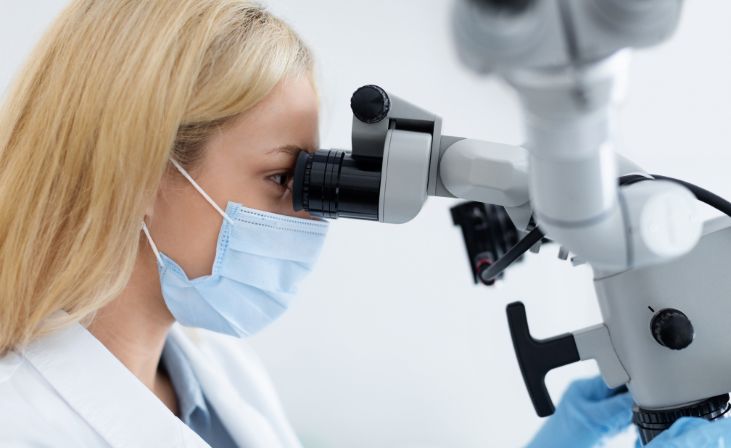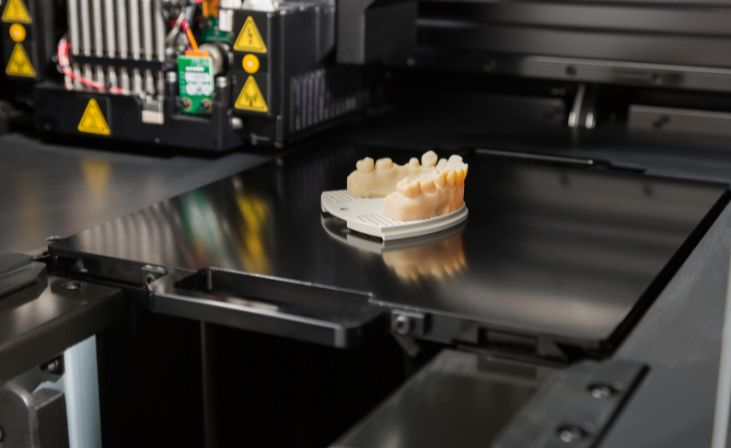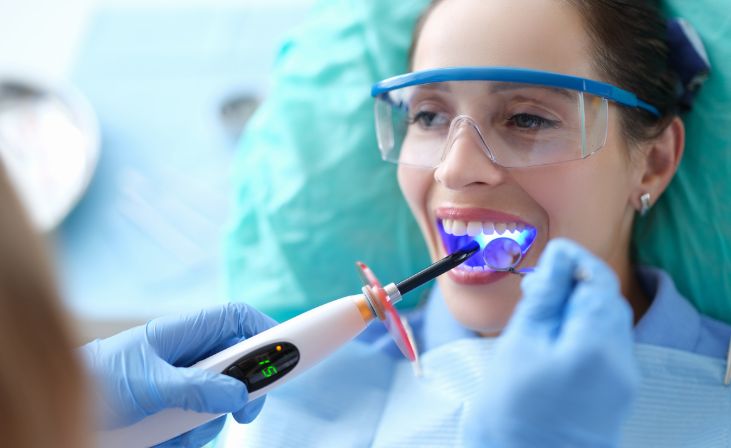Welcome to our exploration of the future of oral care, where we uncover the groundbreaking innovations shaping the dental industry. As technology continues to advance, so too does the landscape of dental care, offering exciting opportunities to revolutionize the way we maintain oral health.
In this comprehensive guide, we’ll dive into the latest trends and advancements transforming the dental industry, from cutting-edge treatments to innovative tools and techniques. Discover how artificial intelligence is enhancing diagnostics, how 3D printing is revolutionizing prosthetics, and how teledentistry is expanding access to care.
The Future of Oral Care: Innovations Shaping the Dental Industry
Introduction to Dental Industry Innovations

The dental industry is continually evolving with innovative technologies and techniques that aim to improve patient care, treatment outcomes, and overall oral health. These advancements are shaping the future of oral care by offering more efficient, comfortable, and personalized solutions for dental professionals and patients alike. From digital imaging and 3D printing to minimally invasive procedures and tele-dentistry, the dental industry innovations are revolutionizing the way dental care is delivered and experienced. The Future of Oral Care.
Also Read: Smile with Confidence: Building Self-Esteem through Dental Wellness
Digital Dentistry
Digital dentistry encompasses a wide range of technologies and tools that leverage digital technology to enhance various aspects of dental practice. Digital imaging systems, such as cone beam computed tomography (CBCT) and intraoral scanners, provide detailed 3D images of the oral structures, enabling more accurate diagnosis, treatment planning, and implant placement. Computer-aided design and computer-aided manufacturing (CAD/CAM) systems allow for the fabrication of crowns, bridges, and dental restorations with unparalleled precision and efficiency. Digital dentistry streamlines workflows, reduces treatment times, and improves patient satisfaction by eliminating the need for messy impressions and manual adjustments. The Future of Oral Care.
3D Printing in Dentistry

3D printing, also known as additive manufacturing, is revolutionizing the field of dentistry by enabling the fabrication of custom dental devices, prosthetics, and models with unprecedented speed and precision. 3D printers can produce highly detailed dental models, surgical guides, and orthodontic appliances directly from digital scans or designs, reducing turnaround times and costs compared to traditional manufacturing methods. Dental laboratories and practices can leverage 3D printing technology to create patient-specific implants, dentures, and temporary crowns with exceptional fit and aesthetics. As 3D printing technology continues to advance, it holds the promise of further revolutionizing dental care by enabling personalized treatment solutions and improving patient outcomes. The Future of Oral Care.
Minimally Invasive Dentistry
Minimally invasive dentistry is a patient-centered approach that focuses on preserving healthy tooth structure and minimizing the need for invasive treatments. Advances in dental materials, techniques, and technology have made it possible to diagnose and treat dental issues at the earliest stages, often without the need for drilling or anesthesia. Techniques such as air abrasion, laser dentistry, and dental sealants allow dentists to remove decay and restore teeth with minimal discomfort and trauma to the surrounding tissues. Minimally invasive dentistry promotes faster healing, reduces the risk of complications, and preserves natural tooth structure, leading to better long-term oral health outcomes and patient satisfaction. The Future of Oral Care.
Teledentistry

Teledentistry is a rapidly growing field that leverages telecommunication technology to provide remote dental consultations, diagnosis, and treatment planning. Through video conferencing, digital imaging, and secure messaging platforms, patients can connect with dental professionals from the comfort of their homes or remote locations, eliminating the need for in-person visits. Teledentistry enables dentists to triage emergencies, provide virtual consultations, and monitor patients’ oral health remotely, improving access to care, especially in underserved communities or rural areas. By embracing teledentistry, dental practices can enhance patient engagement, streamline workflows, and expand their reach to new patient populations. The Future of Oral Care.
Artificial Intelligence in Dentistry
Artificial intelligence (AI) is transforming various aspects of dentistry, from diagnosis and treatment planning to patient communication and practice management. AI-powered algorithms can analyze medical images, patient records, and diagnostic data to assist dentists in identifying oral diseases, predicting treatment outcomes, and optimizing treatment plans. AI-driven chatbots and virtual assistants can provide patients with personalized oral hygiene instructions, appointment reminders, and answers to common dental questions, improving patient engagement and satisfaction. Additionally, AI-powered software solutions can streamline administrative tasks, such as scheduling, billing, and insurance processing, allowing dental practices to operate more efficiently and effectively. As AI technology continues to evolve, its potential to revolutionize dentistry and improve patient care is virtually limitless.
Digital Dentistry
Digital dentistry encompasses various technologies and tools that digitize and streamline dental workflows, from diagnosis and treatment planning to fabrication and delivery of dental restorations. Digital imaging techniques such as intraoral scanners, cone beam computed tomography (CBCT), and digital radiography allow dentists to capture detailed 3D images of the oral cavity, providing valuable diagnostic information and improving treatment accuracy. Computer-aided design (CAD) and computer-aided manufacturing (CAM) software enable dentists to design and fabricate custom dental restorations, such as crowns, bridges, and veneers, with precision and efficiency. Digital dentistry enhances the speed, accuracy, and predictability of dental procedures, leading to better patient outcomes and satisfaction. The Future of Oral Care.
3D Printing in Dentistry
3D printing, also known as additive manufacturing, has revolutionized various industries, including dentistry. In dentistry, 3D printing technology allows for the fabrication of dental prosthetics, surgical guides, orthodontic appliances, and dental models with unparalleled precision and customization. By layering thin slices of material, such as resin or ceramic, based on digital designs, 3D printers can produce complex dental structures with intricate details and optimal fit. 3D printing in dentistry reduces production time, material waste, and costs associated with traditional manufacturing methods, while also enabling personalized treatment options for patients. As 3D printing technology continues to advance, its applications in dentistry are expected to expand, offering new possibilities for improved patient care and outcomes. The Future of Oral Care.
Minimally Invasive Dentistry

Minimally invasive dentistry focuses on preserving healthy tooth structure and promoting natural tooth regeneration while minimizing the need for invasive treatments such as drilling and filling. Advances in diagnostic technologies, materials, and techniques allow dentists to detect dental issues at an early stage and intervene with conservative treatments that preserve tooth integrity. For example, remineralization therapies, such as fluoride varnishes and calcium phosphate pastes, can reverse early stages of tooth decay and strengthen tooth enamel. Additionally, air abrasion and laser technology enable dentists to remove decayed tissue and prepare teeth for restorations with minimal discomfort and tissue loss. Minimally invasive dentistry prioritizes patient comfort, aesthetics, and long-term oral health, leading to better treatment outcomes and patient satisfaction. The Future of Oral Care.
Teledentistry
Teledentistry utilizes telecommunication technologies to deliver dental care and consultations remotely, allowing patients to access dental services from the comfort of their homes or other convenient locations. Through video conferencing, online consultations, and digital communication platforms, dentists can assess patients’ oral health, provide advice and recommendations, and even prescribe medications or treatments when appropriate. Teledentistry facilitates access to dental care for underserved populations, rural communities, and individuals with mobility or transportation challenges. It also offers convenience and flexibility for patients seeking routine checkups, follow-up appointments, or dental consultations without the need for in-person visits. As telecommunication technologies continue to advance, teledentistry is expected to play an increasingly significant role in expanding access to dental care and improving oral health outcomes globally.
Regenerative Dentistry

Regenerative dentistry focuses on harnessing the body’s natural healing mechanisms to regenerate and repair damaged oral tissues, such as teeth, gums, and bone. Stem cell therapy, growth factors, and tissue engineering techniques are used to stimulate tissue regeneration and enhance wound healing in dental procedures such as tooth extraction, periodontal therapy, and dental implant placement. For example, platelet-rich plasma (PRP) and platelet-rich fibrin (PRF) are blood-derived products that contain high concentrations of growth factors and cytokines, which promote tissue regeneration and accelerate healing following dental procedures. Regenerative dentistry holds promise for improving treatment outcomes, reducing complications, and enhancing the long-term success of dental interventions. As research in regenerative medicine continues to advance, new therapies and techniques may further revolutionize the field of dentistry, offering novel solutions for restoring and preserving oral health.
Conclusion
In conclusion, the future of oral care holds tremendous promise, thanks to the innovative technologies and advancements shaping the dental industry. From AI-powered diagnostics to 3D-printed prosthetics, these innovations are revolutionizing the way we approach oral health and dental treatments. As these technologies become more accessible and widespread, patients can expect improved outcomes, personalized care, and greater convenience in managing their oral health. Embrace the possibilities of the future of oral care, and look forward to a world where smiles shine brighter than ever before.
FAQs
What are some examples of innovations shaping the future of oral care?
Innovations in the dental industry include advancements such as artificial intelligence for diagnostics, 3D printing for prosthetics and implants, and teledentistry for remote consultations and monitoring.
How will these innovations impact patients and dental professionals?
These innovations are poised to improve patient outcomes by providing more precise diagnostics, personalized treatments, and greater access to care. They also offer dental professionals enhanced tools and techniques for delivering efficient and effective oral health services.
